27.10.2020
ULA targeting Election Day for Lord of the Rings-themed launch; busy month ahead
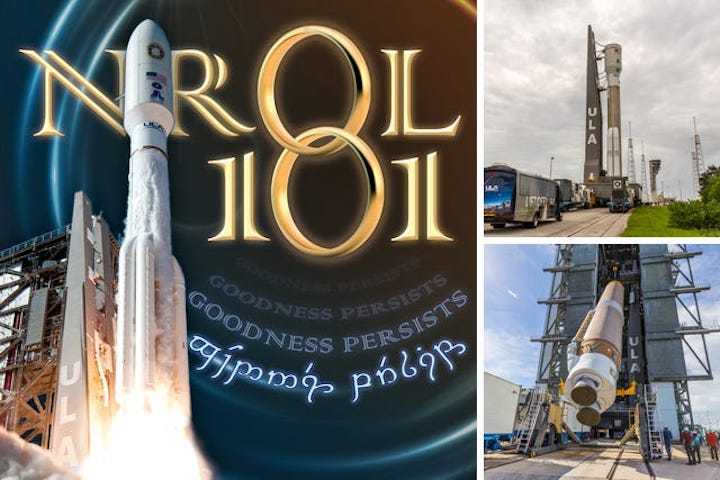
Photos: ULA Atlas V NROL-101 booster at Cape Canaveral Air Force Station
Election Day voters who have their attention caught by a bright point of light arcing over the Atlantic Ocean can take solace in the fact that it's not the "Eye of Sauron" gazing over the Space Coast for his prized ring.
United Launch Alliance confirmed Monday that teams are targeting Nov. 3 for the launch of an Atlas V rocket from Cape Canaveral Air Force Station, this time with a secretive National Reconnaissance Office mission that draws inspiration from "Lord of the Rings." The 206-foot rocket is slated for liftoff during a two-and-a-half-hour window that opens at 5:30 p.m.
In the mission artwork, an Atlas V is seen blasting off from Launch Complex 41 into a sky with two golden rings and "Goodness Persists" translated into the Elvish language constructed by J.R.R. Tolkien.
"NROL-101’s mission patch pays tribute to the 'Lord of the Rings' stories with a gold ring and Elvish script that translates to 'Goodness Persists,'" an NRO spokesperson told FLORIDA TODAY.
The exact meaning is a mystery as the NRO is well-known for its tight-lipped, classified operations. The agency is responsible for building, launching, and operating the federal government's fleet of intelligence-gathering satellites, which often cost well over a billion dollars each.
But at least one thing can be gleaned from the NRO's literary hint: its satellites operate as the nation's eyes in the sky, giving them a high-tech vantage point well above what Sauron could see.
Busy month ahead
ULA's mission is just one of several slated for a jam-packed November that could feature as many as five launches.
Beyond the Election Day Atlas V, the Space Coast could see:
• Early-to-mid November: SpaceX's once-scrubbed objective to launch a Global Positioning System satellite for the Space Force. Engine issues, which rippled out to other launches and are being fixed, forced the first delay at Cape Canaveral's Complex 40.
• Early-to-mid November: Yet another NRO intelligence satellite, this one labeled NROL-108, will fly on a Falcon 9 rocket from either Kennedy Space Center or Cape Canaveral. The existence of this satellite was not publicly known until earlier this month.
• Nov. 14: A SpaceX Falcon 9 will host the high-profile Crew-1 flight with four astronauts in a Crew Dragon capsule. After a separate NASA launch on a Falcon 9 from California on Nov. 10, teams will review the data to make sure the previously mentioned engine issue has been fully resolved. Liftoff from pad 39A is targeted for 7:49 p.m. Nov. 14, which is a Saturday.
• Mid-to-late November: SpaceX will likely fly at least one more Starlink mission with 60 internet satellites from either Cape Canaveral or KSC.
Quelle: Florida Today
----
Update: 29.10.2020
.
Atlas 5 launch from Cape Canaveral scheduled for next week
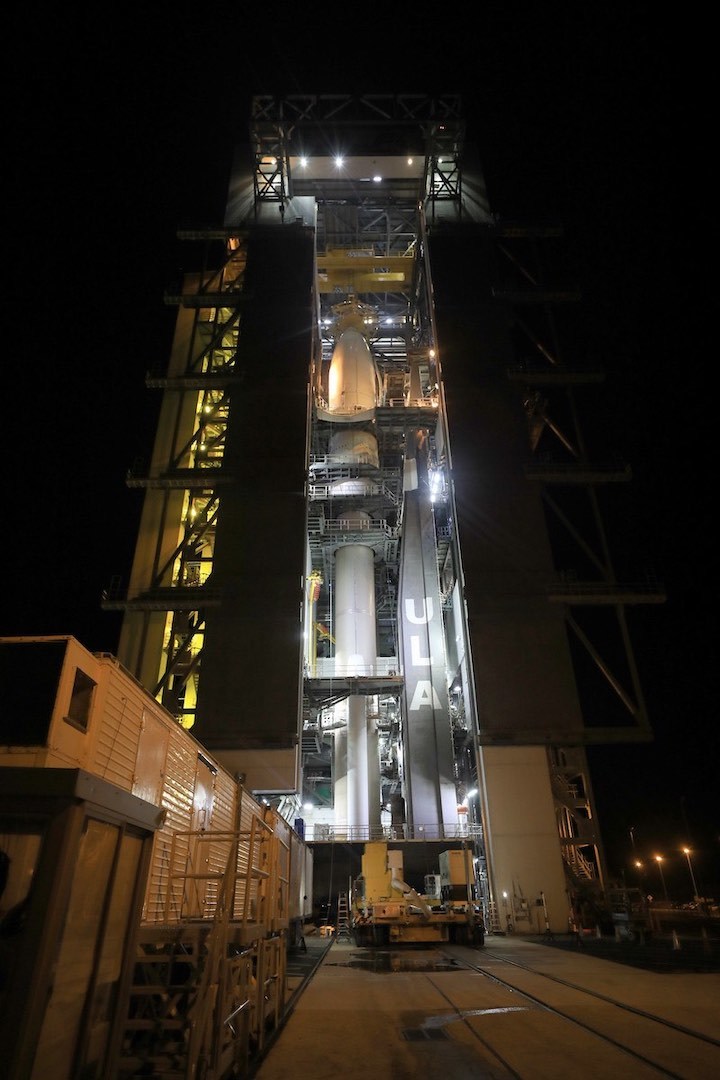
United Launch Alliance teams mounted a top secret payload for the National Reconnaissance Office on top of an Atlas 5 rocket at Cape Canaveral Monday in preparation for a liftoff scheduled just after sunset Nov. 3.
The Atlas 5 launcher is set to blast off from pad 41 at Cape Canaveral Air Force Station at 5:58 p.m. EST (2258 GMT) next Tuesday, Nov. 3. That’s around 22 minutes after sunset at the Florida spaceport.
The Election Day launch — codenamed NROL-101 — will be the first Atlas 5 rocket flight to be powered by a new model of strap-on solid rocket boosters built by Northrop Grumman. The Northrop Grumman boosters replace solid-fueled motors from Aerojet Rocketdyne that flew on previous Atlas 5 rockets.
The Atlas 5 flight from pad 41 is going ahead next week as ULA continues resolving launch pad infrastructure issues at the company’s other Cape Canaveral launch facility. Those problems have delayed the flight of a Delta 4-Heavy rocket with a different NRO spy satellite since late August, and caused ULA to swap the order of its missions to have the next Atlas 5 flight go first.
The most recent culprit for the Delta 4-Heavy launch delays has been an issue with the swing arms on the pad.
Tory Bruno, ULA’s president and CEO, tweeted Oct. 20 that the company is fixing a mechanical issue with the swing arms on pad 37B.
“We are working through the hydraulics on the swing arms, replacing several dozen valves, a couple thousand gallons of hydraulic fluid, and several other important items,” Bruno tweeted. “We will set a flight date soon. Mission success is the priority.”
The launch delays have raised concerns with aging infrastructure at the Delta 4 launch pads. ULA has only five more Delta 4-Heavy missions in its backlog through 2023 before the Delta rocket family is retired in favor of the company’s next-generation Vulcan Centaur rocket.
“We do more, not less, to maintain the Delta pads today,” Bruno tweeted. “However, with the low launch tempo, and advanced age, they seemed to have crossed a threshold, so we will change.”

The Delta ground systems are more than 20 years old, Bruno added, and “coping with a low launch tempo.”
He said ULA engineers are evaluating Delta 4’s launch pad systems to identify how to “reset their life” with preemptive refurbishment and replacements, along with periodic activations and testing in between missions.
The next Delta 4-Heavy launch — designated NROL-44 — is now expected to lift off some time after the company’s next Atlas 5 mission set for Nov. 3.
Read more about the NROL-44 launch delays in our earlier story.
The launch campaign for the next Atlas 5 mission began with the raising of the rocket’s first stage — tail number AV-090 — on its mobile launch platform inside the Vertical Integration Facility near launch pad 41 on Sept. 11. In the following days, technicians installed the rocket’s three GEM 63 solid-fueled boosters on the bottom of the bronze first stage.
Workers then added the rocket’s Centaur upper stage, already integrated with the bottom part of the Atlas 5’s payload fairing, made by RUAG Space in Switzerland.
Last week, ULA transferred the Atlas 5 rocket to pad 41 for a fueling test and practice countdown. The ULA team loaded the Atlas 5’s first stage with its flight supply of RP-1 kerosene fuel, which will remain aboard the rocket through launch.
On Oct. 21, the Atlas 5 team ran through countdown procedures and filled the rocket’s first stage with its load of super-cold liquid oxygen. The Atlas 5’s Centaur upper stage was also loaded with liquid hydrogen and liquid oxygen as the practice countdown continued through pre-launch checkouts, polling, and final status checks before cutoff of the sequence just prior to the point of engine ignition.
The rocket was then drained of its hydrogen and oxygen propellants and returned to the VIF a quarter-mile to the south of pad 41.

The classified payload for the NROL-101 mission was mounted on top of the Atlas 5 rocket Monday, capping assembly of the 206-foot-tall (63-meter) launch vehicle.
The launch scheduled next week will mark the 86th flight of an Atlas 5 rocket, and the fourth Atlas 5 to blast off in the “531” configuration with three solid rocket boosters and a 5.4-meter-diameter (17.7-foot) payload fairing.
It will be ULA’s fifth mission of 2020.
The new GEM 63 motors set to debut on the Atlas 5 mission next week measure 66 feet (20 meters) long and 63 inches (1.6 meters) wide. They can produce 373,800 pounds of thrust at maximum power. The GEM 63 boosters will ignite on the launch pad and burn for 94 seconds, consuming 97,500 pounds (44.2 metric tons) of pre-packed solid propellant before jettisoning to fall into the sea.
The GEM 63 booster design is an evolution of the 60-inch GEM 60 motor built by Northrop Grumman for ULA’s Delta 4 rocket family. There are no more Delta 4s left to fly that require the GEM 60 solid rocket booster.
Northrop Grumman, through its predecessors ATK and Orbital ATK, also supplied smaller strap-on boosters for the now-retired Delta 2 and Delta 3 rocket families.
The boosters give an extra push to rockets carrying heavier payloads into orbit, or missions that need to place satellites into high-altitude orbits. The Atlas 5 rocket can launch with any number of solid-fueled boosters between zero and five, depending on the requirements of each mission.
Like the AJ-60A motor, the GEM 63 will have fixed nozzles and a curved, or ogive, nose cone, providing the proper aerodynamic shape to ensure the booster cleanly falls away from the Atlas 5 after burnout. Northrop Grumman’s GEM 63 booster produces roughly the same thrust and has approximately the same dimensions as the AJ-60A, allowing ULA to introduce the new booster model as a “direct replacement” for the older Aerojet Rocketdyne version.
Aerojet Rocketdyne’s AJ-60A motor has a flawless record since its first use on the Atlas 5’s third launch in July 2003, with 127 of the boosters flown to date.
ULA announced in 2015 the selection of Orbital ATK — now part of Northrop Grumman — to provide solid rocket boosters for future Atlas 5 launches, and for the next-generation Vulcan Centaur rocket. At the time, ULA said the selection of the GEM 63 rocket motor would “significantly lower the price to ULA and to the U.S. government.”
The Northrop Grumman boosters, made with the help of advanced robotics and automation, are also designed to be easier to attach to the launch vehicle at the Vertical Integration Facility, the company says.
A lengthened version of the GEM 63 known as the GEM 63XL will fly on ULA’s new Vulcan Centaur rocket, which is scheduled for an inaugural launch in the second half of 2021. The Atlas 5 rocket can fly with any number of solid rocket boosters from zero to five, while the Vulcan Centaur can launch in configurations with two, four or six boosters alongside the rocket’s two Blue Origin BE-4 main engines.
Northrop Grumman performed three test-firings of GEM 63 boosters at a test site in Promontory, Utah, before engineers cleared the solid-fueled rocket motor for flight.
The AJ-60A motors from Aerojet Rocketdyne are not done yet.
Julie Arnold, a ULA spokesperson, said the company will continue to fly the Aerojet Rocketdyne boosters on future Atlas 5 missions until the rocket is fully transitioned to the Northrop Grumman motors. The AJ-60As will continue launching on missions with Boeing’s Starliner commercial crew capsule, and ULA is working with NASA toward the future use of GEM 63s on astronaut launches.
Arnold said ULA plans for all Atlas 5 launches after 2021 to use the new GEM 63s.
Quelle: SN
----
Update: 2.11.2020
.
Weather looks good for ULA's Election Day rocket launch from Cape Canaveral
Excellent weather conditions are expected for the liftoff of a United Launch Alliance Atlas V rocket on Tuesday, a mission that will boost one of three secretive national security satellites currently waiting for their rides to orbit.
The Space Force on Saturday said it expects 90% "go" conditions for the rocket's 5:58 p.m. liftoff from Cape Canaveral Air Force Station. The window at Launch Complex 41 will remain open until 8:10 p.m.
"Winds are forecast to be sustained near 18 kt (20 mph) with gusts to 25 kt (28 mph) from the northeast through early evening on Tuesday," 45th Weather Squadron forecasters said on liftoff winds, which are the primary concern. "The onshore winds will bring stable scattered stratocumulus clouds with little-to-no threat of cloud violations."
Encapsulated in Atlas V's payload fairing is an intelligence-gathering National Reconnaissance Office satellite known as NROL-101. The secretive agency operates the government's intelligence constellation and relays data several other organizations.
Typically quiet about its missions, the NRO confirmed to FLORIDA TODAY that this launch's patch and related artwork pay tribute to J.R.R. Tolkien's "Lord of the Rings" series. The graphics feature golden rings and "Elvish" script that translates to "Goodness Persists" – likely a reference to the NRO's responsibility of gathering data critical to the Department of Defense and other intelligence agencies.
But it's not the only NRO payload waiting for liftoff: a SpaceX Falcon 9 rocket is also targeting sometime this month, likely the second half, for NROL-108. And a ULA Delta IV Heavy rocket that's been scrubbed several times due to hardware and weather issues could launch the NROL-44 spacecraft sometime later this month or December.
Right after Atlas V flies on Election Day, meanwhile, a separate SpaceX mission is on the range's calendar for a 6:28 p.m. Wednesday liftoff from LC-40. The 230-foot Falcon 9 will fly a Global Positioning System satellite for the Space Force, a mission scrubbed once due to engine issues caused by a buildup of protective masking lacquer.
NASA is requiring GPS to fly before SpaceX launches the agency's next team of astronauts, now slated for liftoff from Kennedy Space Center at 7:49 p.m. Nov. 14. If data from the resolved engine issues look good, teams will proceed with the mission from pad 39A, marking SpaceX's first certified launch to the International Space Station.
Quelle: Florida Today
----
Update: 3.11.2020
.
After rollout, ULA delays launch of Atlas V rocket from Cape Canaveral
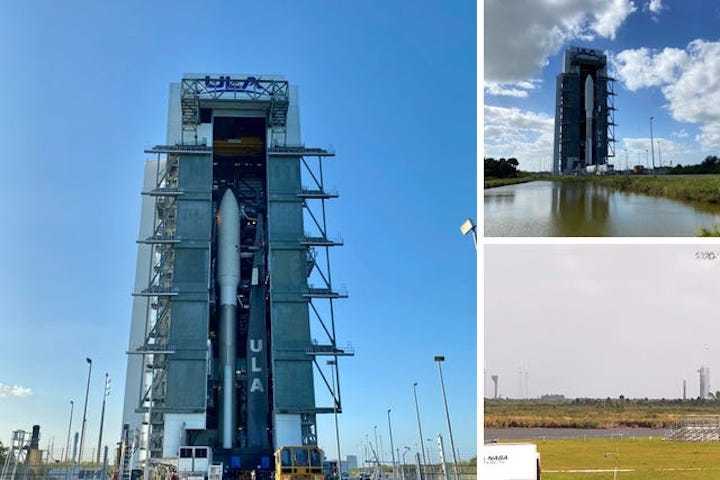
Despite the rollout of an Atlas V rocket Monday afternoon, United Launch Alliance delayed its planned Election Day launch from Cape Canaveral Air Force Station.
Teams at Launch Complex 41 were slightly delayed in rolling the 206-foot rocket out to its pad, but it successfully made the 1,800-foot trek from the vertical integration facility by 1:30 p.m. Monday. ULA had been targeting Tuesday evening, but now plans on launching at 5:54 p.m. Wednesday.
"Upon arriving at the launch pad we experienced an upper payload environmental control system flow rate reduction," ULA said in a statement. "The team is in the process of rolling the Atlas V back to the vertical integration facility to complete troubleshooting. The vehicle and payload are healthy."
Company CEO Tory Bruno said on Twitter that powerful winds at the pad may have caused damage to that environmental control system hardware.
"Spacecraft is fine, but need to check it out," Bruno said.
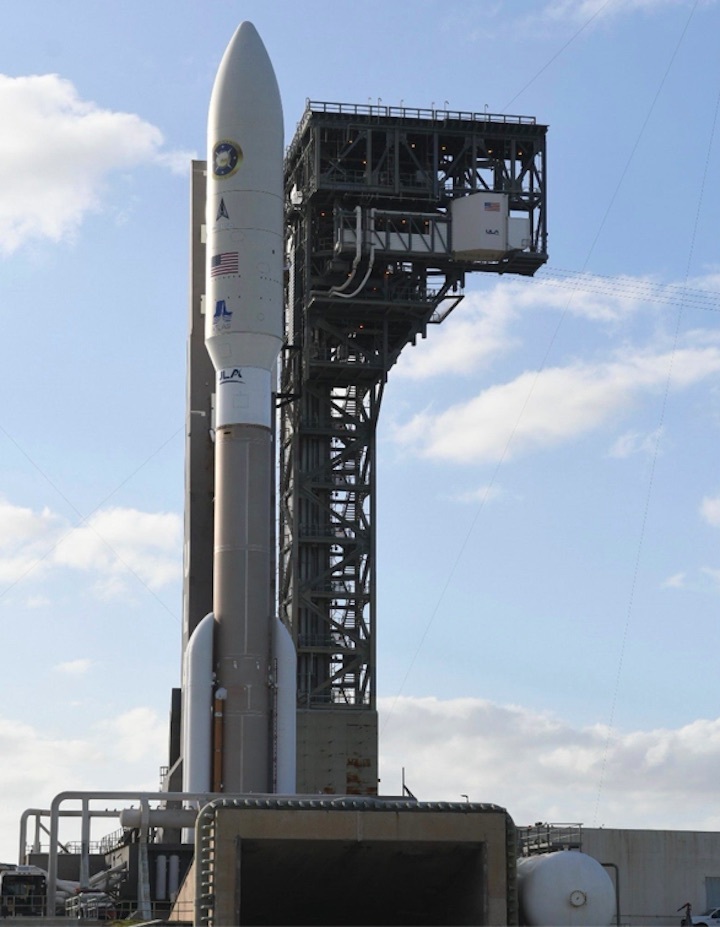
Encapsulated in the rocket's payload fairing is NROL-101, a secretive intelligence-gathering satellite owned and operated by the National Reconnaissance Office. Despite the NRO's secretive nature, its expensive – usually north of $1 billion – satellites are known for offering powerful imagery and data collection capabilities.
Also on the range's schedule this week is a SpaceX Falcon 9 tasked with launching a previously scrubbed Global Positioning System satellite for the Space Force. Teams at Launch Complex 40 are targeting between 6:20 p.m. and 6:40 p.m. Thursday for liftoff.
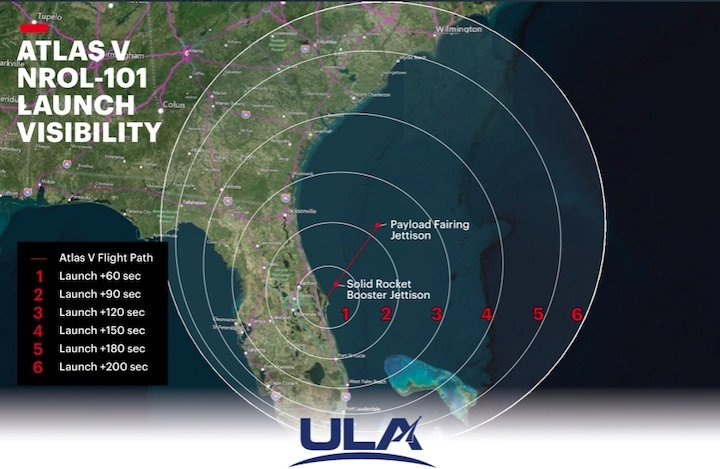
Quelle: Florida Today, ULA
----
Update: 5.11.2020
.
(Cape Canaveral Air Force Station, Fla., Nov. 4, 2020) – The launch of a United Launch Alliance Atlas V carrying the NROL-101 mission for the National Reconnaissance Office was scrubbed today due to an unexpected system response from remotely commanded ground system liquid oxygen valves. The team continues to analyze the system and will protect for our next launch attempt no earlier than Nov. 6.
Quelle: ULA
----
Update: 7.11.2020
.
NROL-101 Moves to NET Friday, Weekend Weather Outlook Looks Iffy
It is turning into a “Groundhog Day” of sorts at Space Launch Complex (SLC)-41 pad surface at Cape Canaveral Air Force Station, Fla., following Wednesday night’s scrubbed launch attempt of United Launch Alliance’s (ULA) Mighty Atlas V with the highly secretive NROL-101 payload for the National Reconnaissance Office. The mission, which has succumbed to two postponed launch attempts in as many days, will now stand down until no sooner than Friday, 6 November, although the weather outlook heading into the weekend looks highly unfavorable.
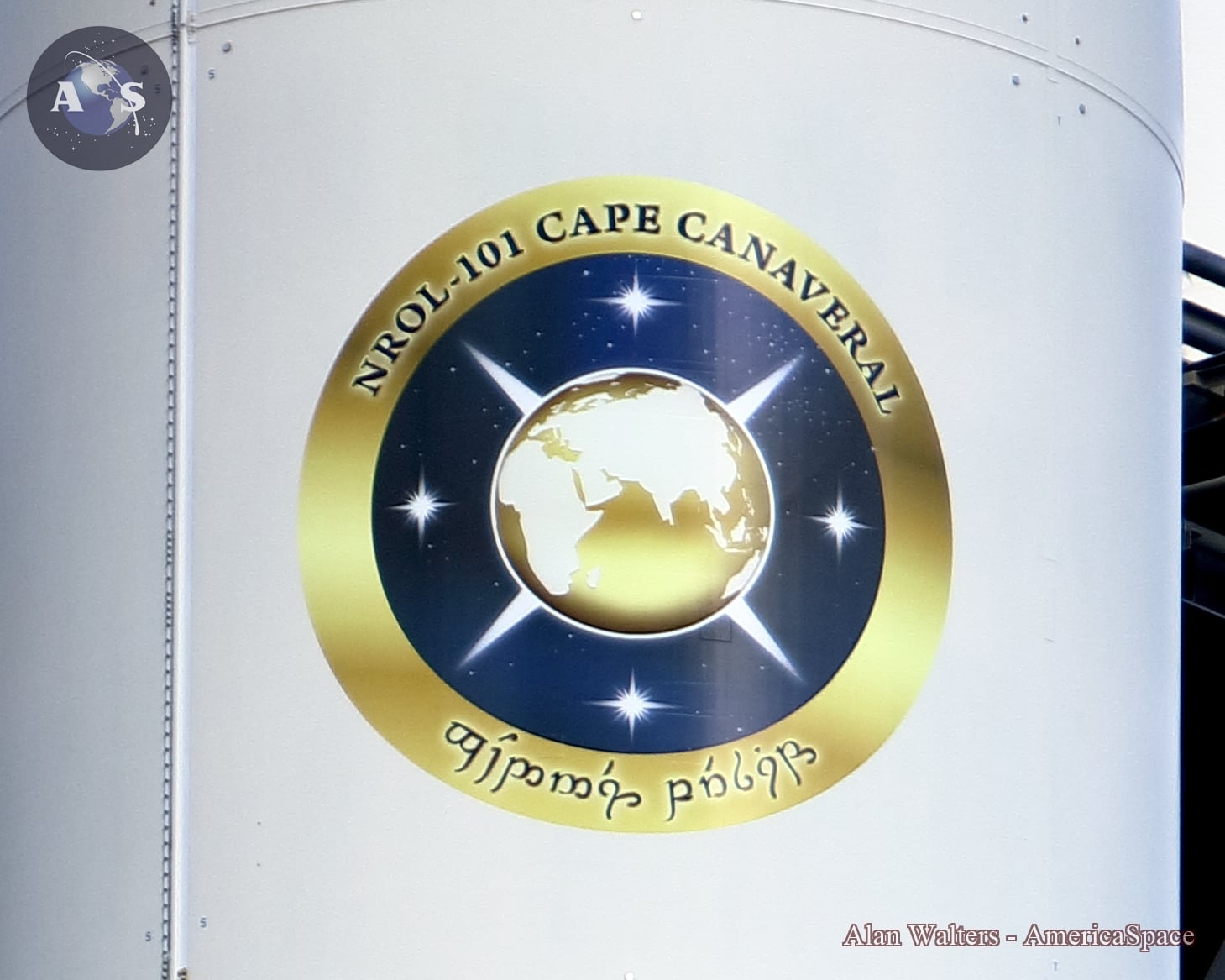
As detailed in AmericaSpace’s NROL-101 preview article, virtually nothing of substance has trickled into the public domain about the nature of the payload. However, its presence atop the Atlas V in its infrequently-used “531” configuration—equipped with a 17-foot-diameter (5-meter) payload fairing, three solid-fueled boosters and a single-engine Centaur upper stage—does offer an indicator of its possible size, mass, orbital destination or energy requirements.
The 531 has only been used three times, delivering the first three Advanced Extremely High Frequency (AEHF) military communications satellites in August 2010, May 2012 and most recently September 2013. Nicknamed “The Thunderer”, the 531 has the capability to lift 34,350 pounds (15,575 kg) to low-Earth orbit and 16,480 pounds (7,475 kg) to Geostationary Transfer Orbit.
The Atlas V Common Core Booster (CCB) and Centaur for this mission were delivered to the Cape in early July, followed by the three uprated, 63-inch-wide (1.6-meter) Graphite Epoxy Motors (GEM-63s) later that month. These rocket parts came together in the 300-foot-tall (100-meter) Vertical Integration Facility (VIF) in September for the Launch Vehicle On Stand (LVOS) milestone.
Last month, minus its Medium Payload Fairing (PLF), the vehicle was rolled the 1,800 feet (550 meters) from the VIF to the SLC-41 pad surface for a Wet Dress Rehearsal (WDR). In the wake of the WDR, the RP-1 remained in the Atlas V tanks, but the cryogens were fully drained and the stack was returned to the VIF for integration of its payload. On 26 October, NROL-101—fully encapsulated in its two-piece fairing—was mounted atop the rocket, topping it off at 206 feet (62.8 meters) tall.
Originally targeting a sunset liftoff on 3 November, a smooth Launch Readiness Review (LRR) on Saturday produced a “Go” for the Atlas V to be rolled from the VIF to the pad on Monday. Although the vehicle and its Mobile Launch Platform (MLP) reached the pad without incident, strong winds from the north were expected to be sustained near 35 mph (56 km/h), gusting at up to 43 mph (68 km/h).
After rollout, a flow-rate reduction was noted in the payload’s Environmental Control System (ECS), which prompted an almost immediate rollback to the VIF. “Platforms in the VIF enabled technicians to reach this area at the top of the rocket,” ULA subsequently noted on its website, “which is inaccessible at the launch pad.”
“Going to roll back to the VIF,” ULA CEO Tory Bruno tweeted. “Very high winds at the pad. May have sustained damage to the upper ECS duct. Spacecraft is fine, but need to check it out.” It would appear that the task was accomplished swiftly, for the Atlas V was returned to SLC-41 later on Tuesday afternoon.
Weather conditions for Wednesday’s second launch attempt were predicted to be 70-percent-favorable and countdown operations began without incident at T-6 hours and 20 minutes. The Atlas and Centaur systems were respectively powered-up and launch teams proceeded through an intricate sequence of testing of the vehicle.
Just before the first 15-minute built-in hold in the countdown at T-2 hours, prior to fueling, Launch Weather Officer Jessica Williams reported that conditions were acceptable to begin loading the rocket with 66,000 gallons (300,000 liters) of cryogenic liquid oxygen and hydrogen propellants. The Atlas V’s flight supply of rocket-grade kerosene (known as “RP-1”) was loaded aboard the vehicle during WDR operations and has remained in the tanks.
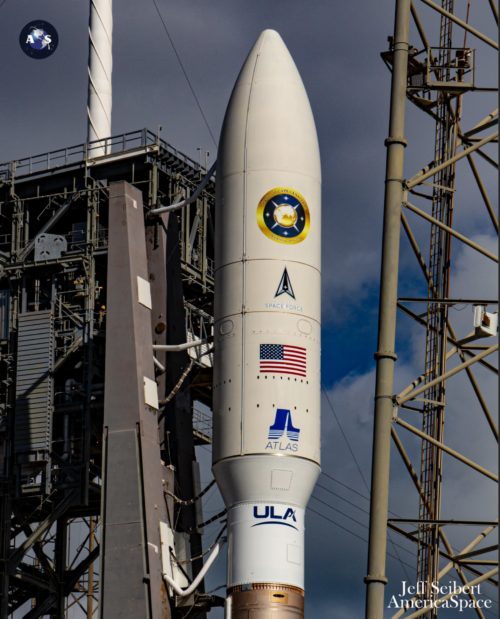
Ms. Williams noted that the weather exhibited just a few low and broken clouds, good visibility and east-northeasterly winds of 25 mph (40 km/h) to 30 mph (48 km/h).
Shortly after 3 p.m. EST, Launch Conductor Scott Barney authorized teams to begin their departure from SLC-41, preparatory to fueling. Coming out of the first of two 15-minute built-in holds in the countdown, engineers began the process of chilling down the liquid oxygen propellant lines.
But shortly after 3:30 p.m. EST, a ground valve issue emerged with the first-stage liquid oxygen system, prompting Mr. Barney to halt the countdown at T-1 hour and 47 minutes to enable Anomaly Chief Dave McFarland and his team to troubleshoot the problem. Engineers were despatched to SLC-41 to examine hardware in the Atlas V’s liquid oxygen storage area, but at 5:54 p.m. EST—by happenstance the exact time that T-0 should have been reached—Mission Director Col. Chad Davis formally called a scrub.
ULA Launch Director Tom Heter III relayed the call to his team, as the process of reconfiguring the vehicle got underway for a 48-hour turnaround. In a subsequent update, it was noted that “an unexpected system response from remotely-commanded ground system liquid oxygen valves” was the culprit behind Wednesday’s scrub. “Almost there, but ran out of time,” tweeted Mr. Bruno. “We will be back in 48 hours.”
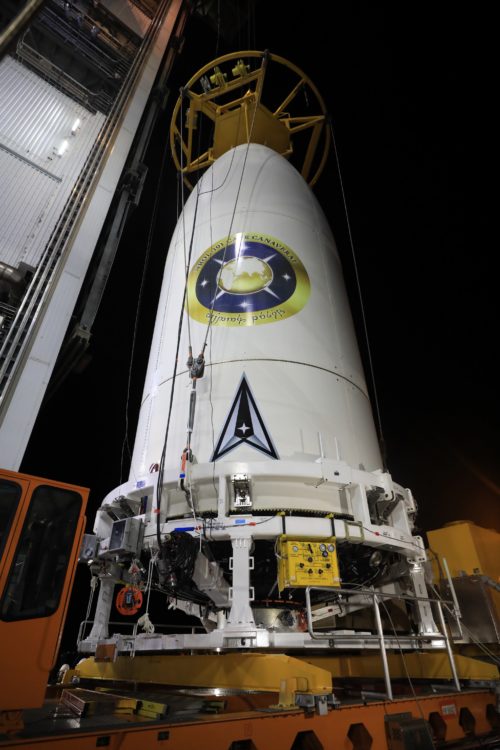
But the weather outlook for both Friday and Saturday do not look good. According to the 45th Weather Squadron at Patrick Air Force Base, in an update issued Wednesday night, there is only a 40-percent probability of acceptable conditions for Friday, deteriorating to only 30 percent on Saturday.
“A strong high-pressure ridge across the mid-Atlantic states and the elongated area of low pressure south of Cuba associated with Tropical Depression Eta is creating a tight pressure gradient over the Florida peninsula,” it was noted. “This gradient will tighten through Sunday, as Eta moves back towards the northeast, closer to Florida.” Although wind-speed forecasts are dependent upon Eta’s future progress, winds of up to 34 mph (55 km/h) are anticipated, together with scattered showers and some thicker mid-to-high-level clouds, plus a “slight” potential for lightning on Saturday.
Quelle: AS
+++
ULA Atlas V NROL-101 Rollout
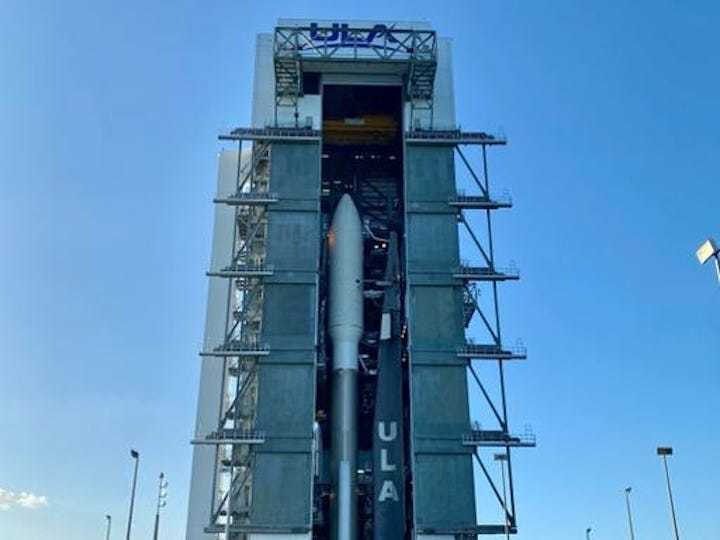
The planned weekend launch of an Atlas V rocket from Cape Canaveral Air Force Station will push into next week due to a tropical system near Florida, United Launch Alliance said Friday.
Tropical Depression Eta, recently downgraded from hurricane status, is expected to strengthen and skirt the west coast of Florida, diminishing Atlas V's chances of flying Sunday evening. ULA will instead target no earlier than 5:22 p.m. Wednesday.
"We are rolling the Atlas V rocket carrying the NROL-101 mission for the National Reconnaissance Office back to the Vertical Integration Facility (VIF) to secure the payload and vehicle," the company said Friday.
Atlas V's last launch attempt on Wednesday was scrubbed due to issues with the fueling system at Launch Complex 41, but ULA also confirmed the hardware has been fixed.
"The issue with the remotely commanded ground system liquid oxygen valves has been resolved and the rocket and payload are healthy," ULA said.
The 206-foot rocket is tasked with launching a clandestine mission for the NRO, which owns and operates the nation's fleet of intelligence satellites. The spacecraft are known to have cutting-edge imaging technologies, but little else has been made public.
The arrival of four astronauts for SpaceX's next mission to the International Space Station, meanwhile, is still on for Sunday afternoon. Victor Glover, Mike Hopkins, Shannon Walker and Soichi Noguchi are slated to arrive at Kennedy Space Center around 2 p.m., then kick off a busy week of rehearsals and quarantine.
Their Crew Dragon capsule is scheduled to launch from pad 39A at 7:49 p.m. Nov. 14.
Launch Wednesday, Nov. 11
- Rocket: United Launch Alliance Atlas V
- Mission: NROL-101 intelligence satellite
- Launch Time: 5:22 p.m.
- Launch Window: About two hours
- Launch Complex: 41 at Cape Canaveral Air Force Station
- Weather: Forecast expected Sunday
Visit floridatoday.com/space at 4 p.m. Wednesday to watch this launch live.
Quelle: Florida Today
----
Update: 9.11.2020
.
Due to impending weather and uncertainty related to Tropical Storm Eta, ULA is now targeting Thur., Nov. 12, at 5:18 p.m. EST for the launch of the #NROL101 mission for the pending range approval.
Quelle: ULA
----
Update: 13.11.2020 / 18.00 MEZ
.
Start von Atlas-5 mit NROL-101 Satelliten
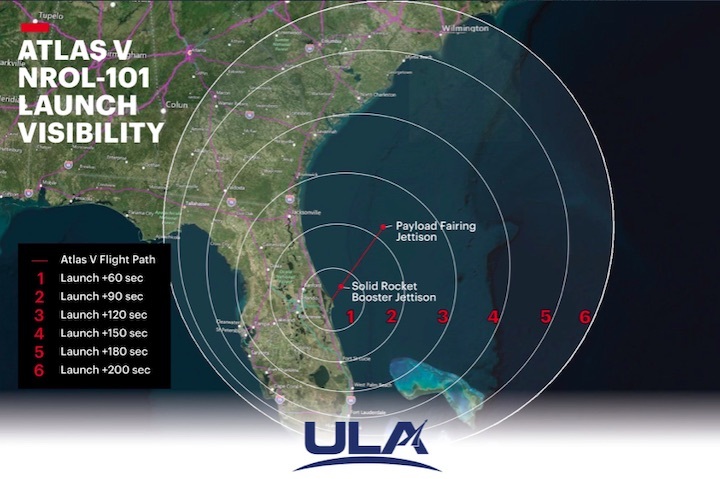
Quelle: ULA
+++
Update: 23.30MEZ



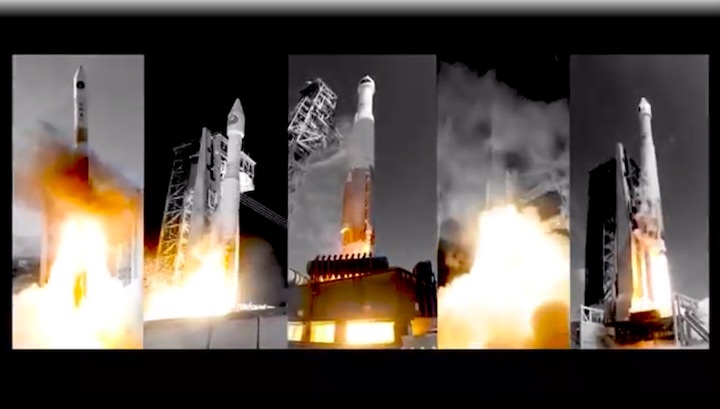
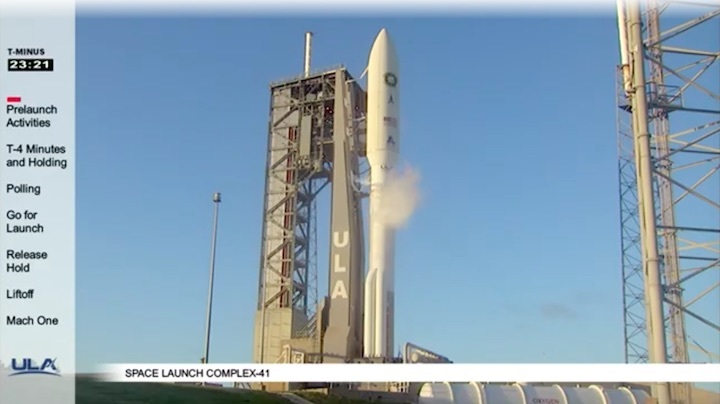
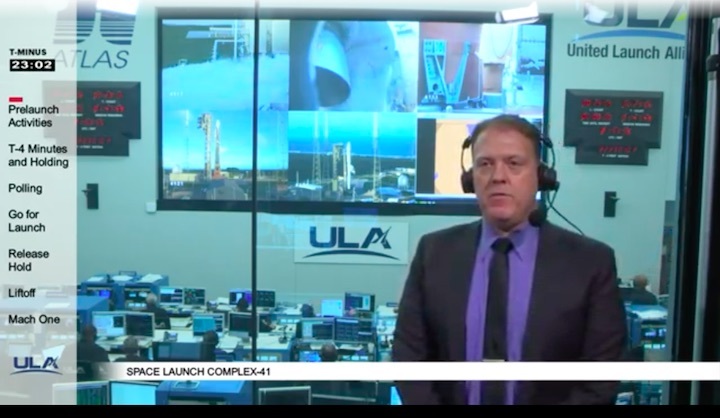
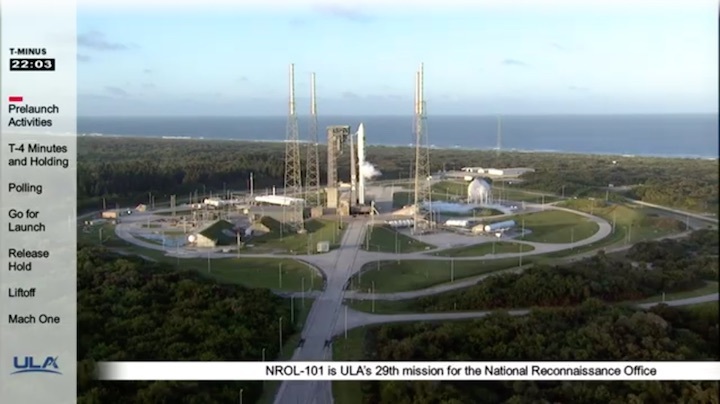
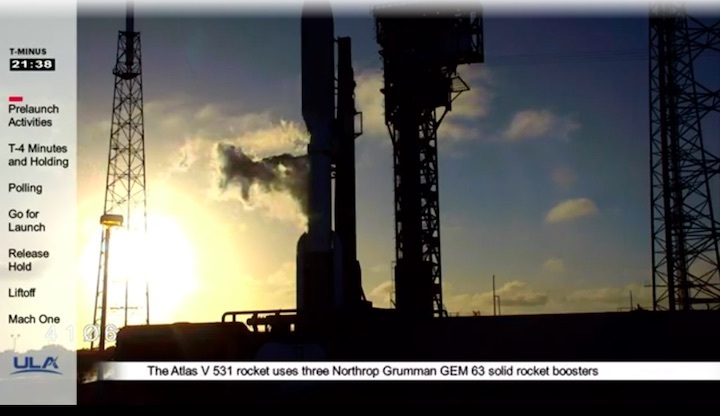
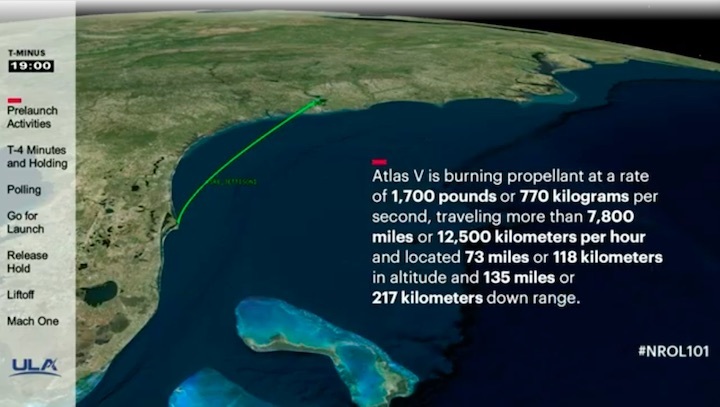
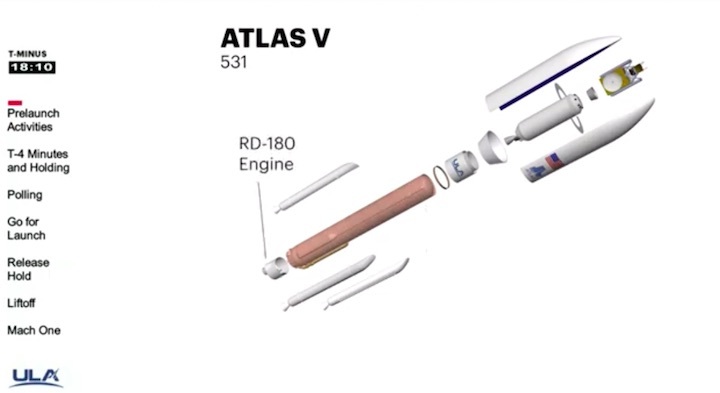
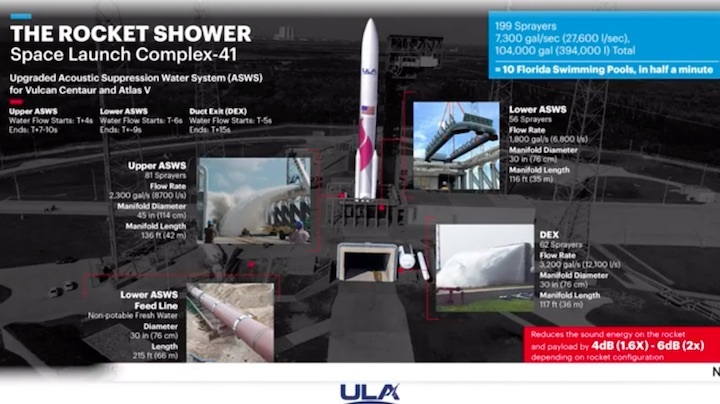
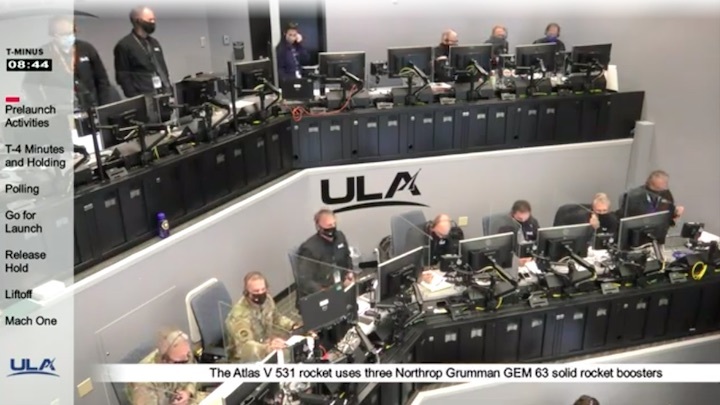
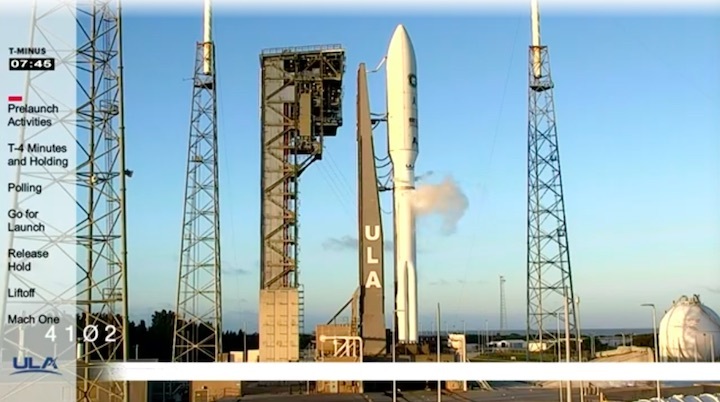
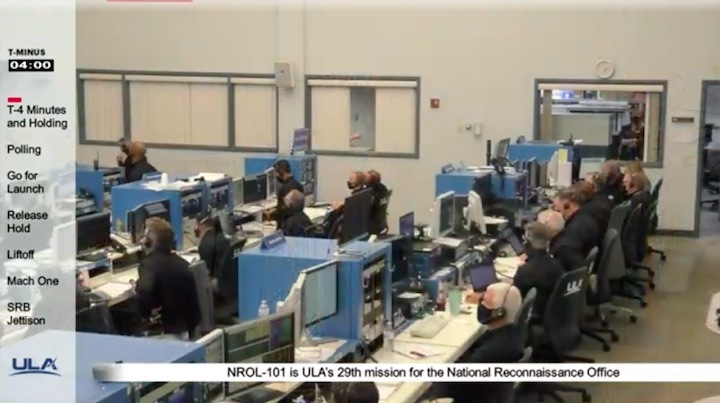
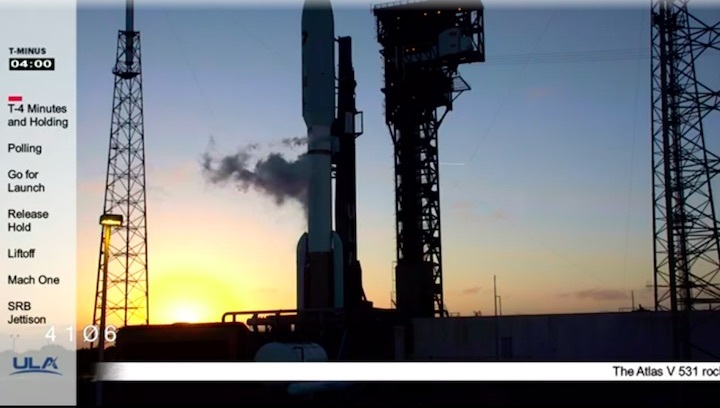
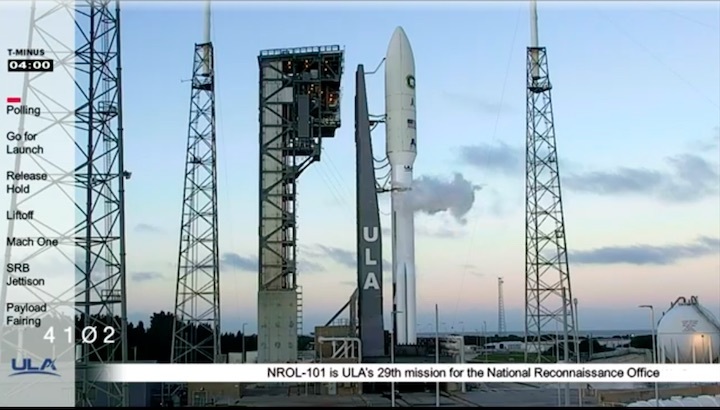
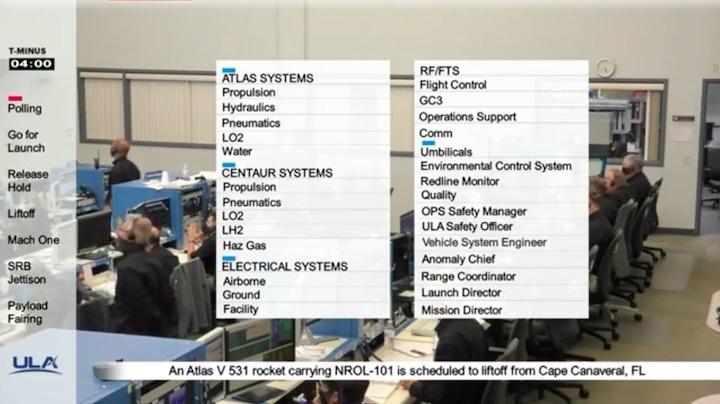
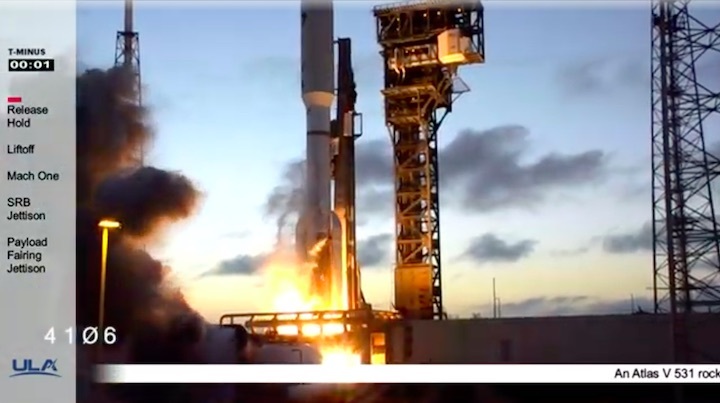
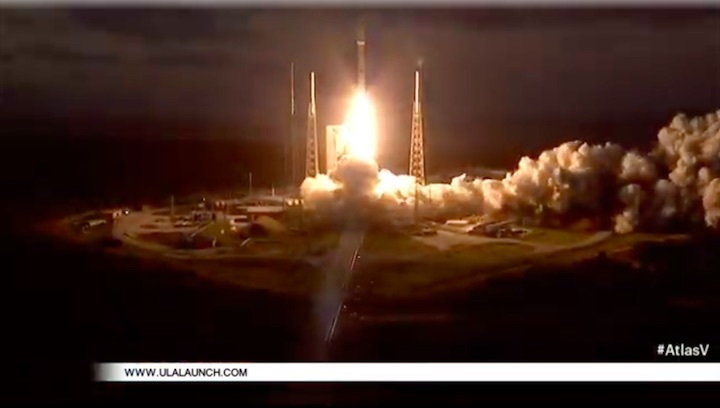
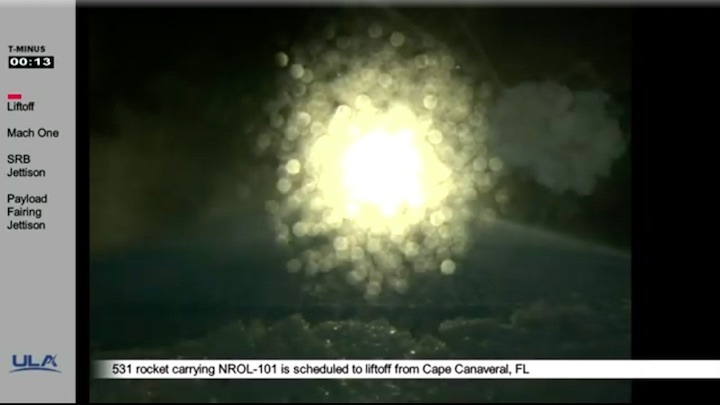
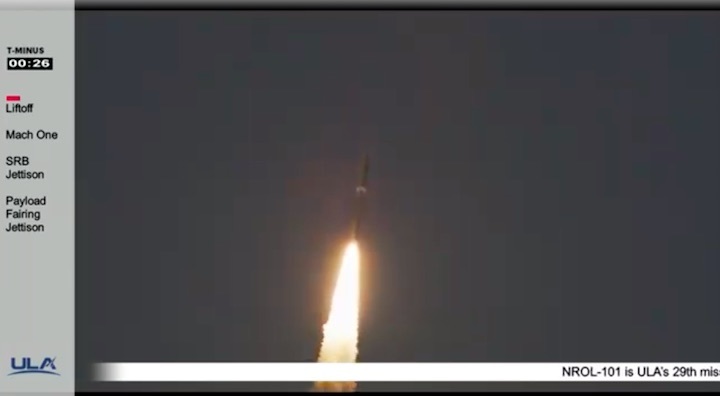
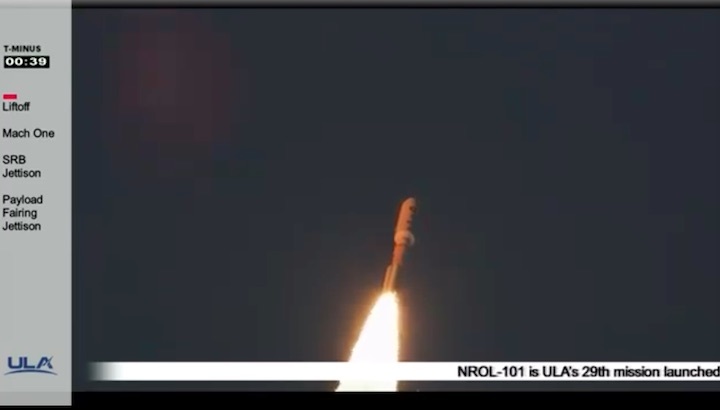
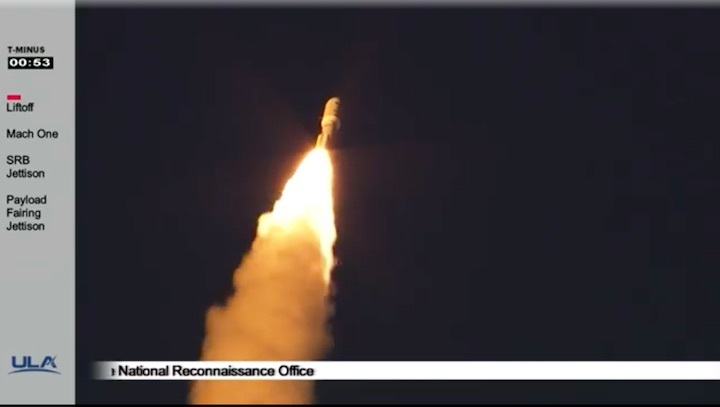
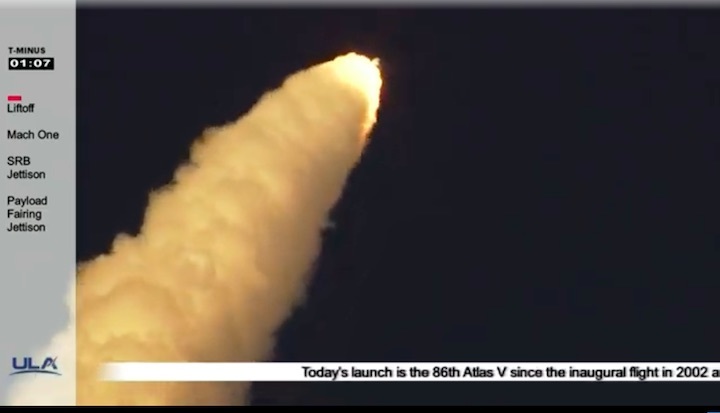
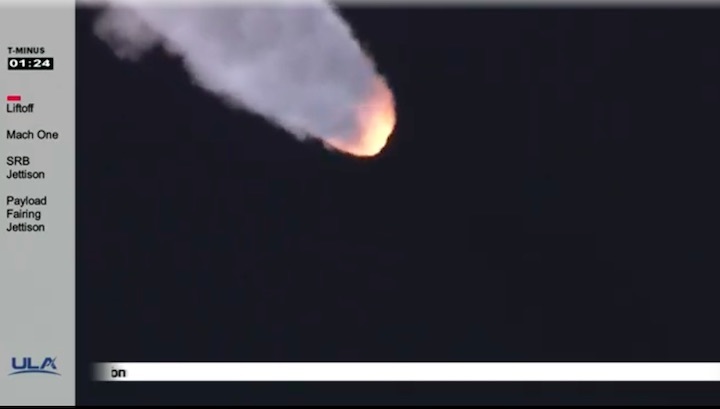
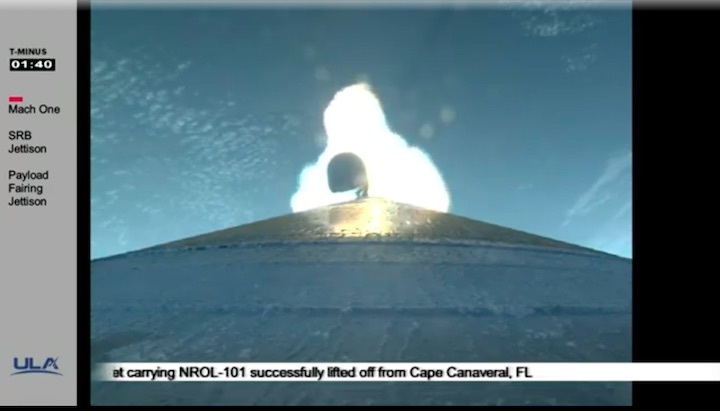
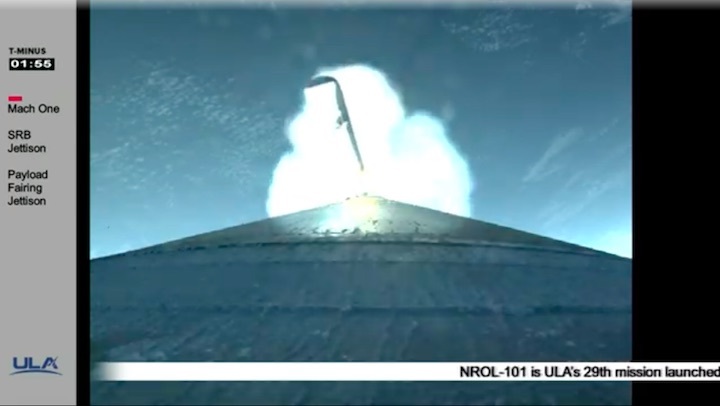
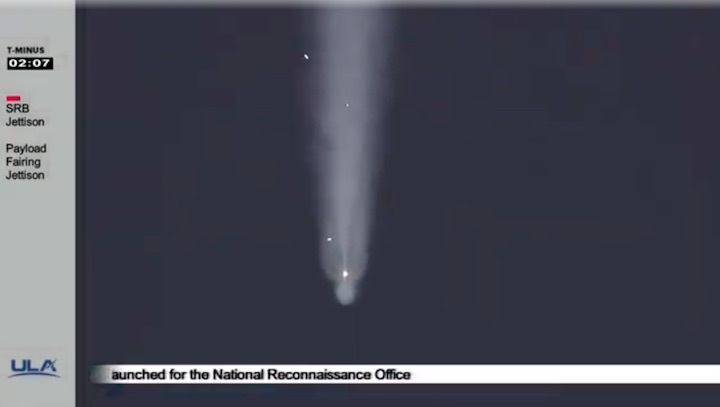
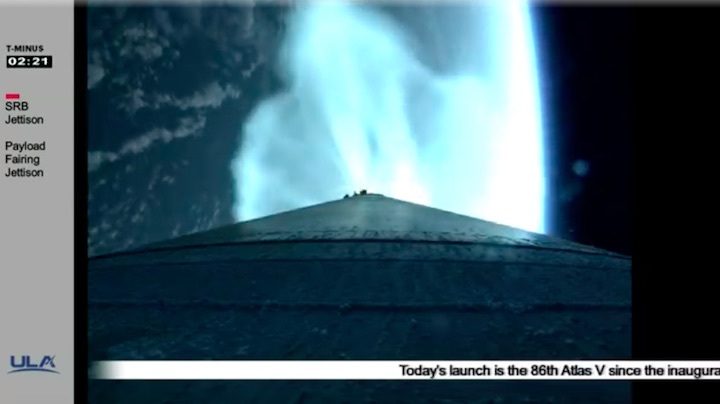
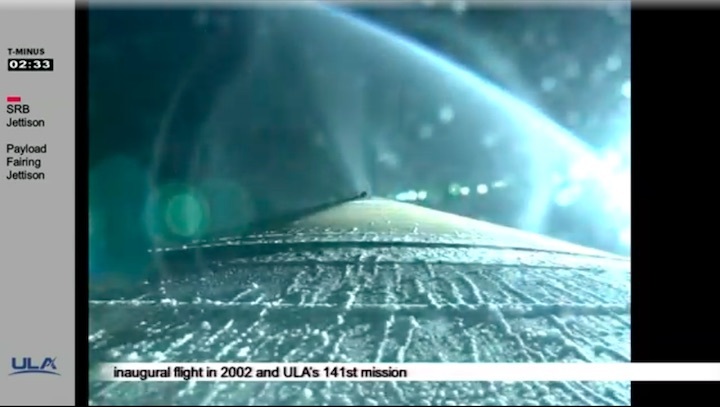
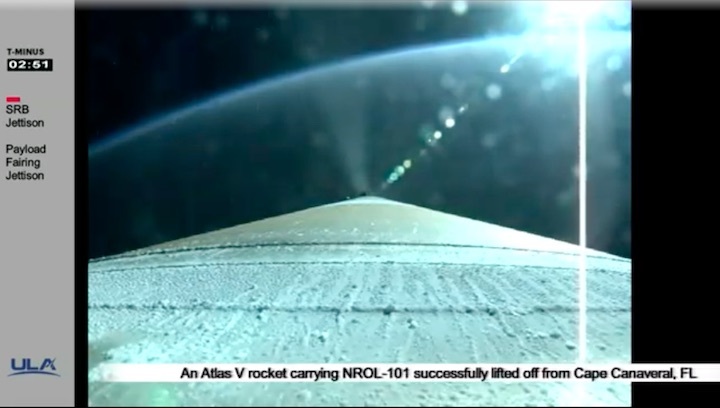
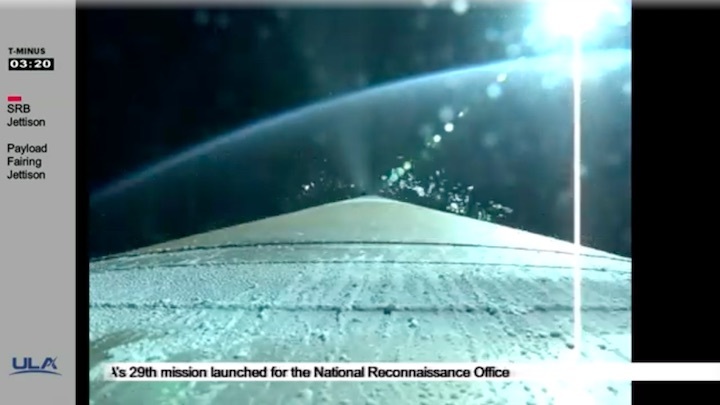
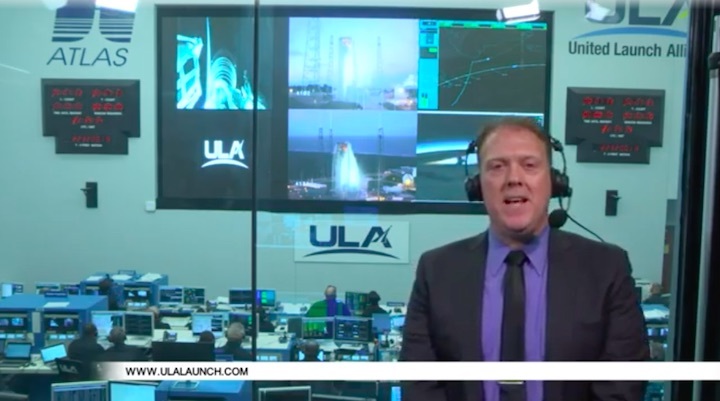
Quelle: ULA
+++
LIVE pictures from the USA, Thank you LPNTED:
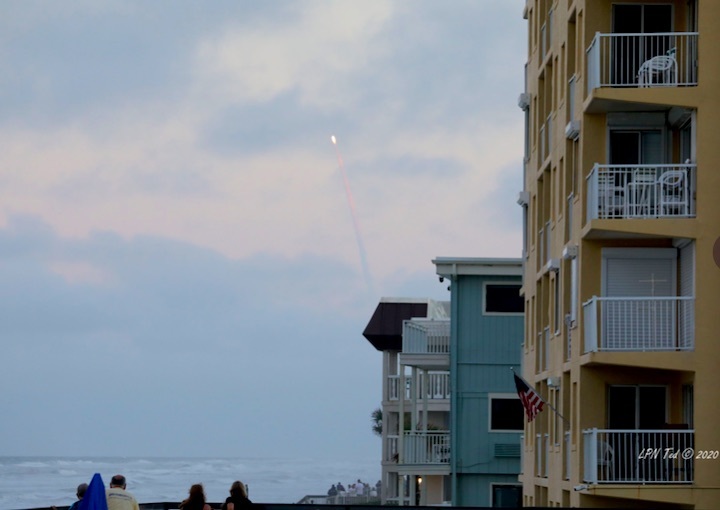
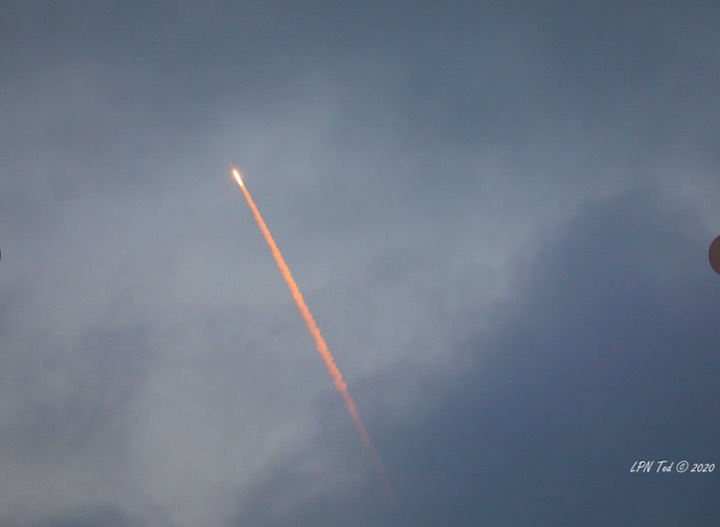
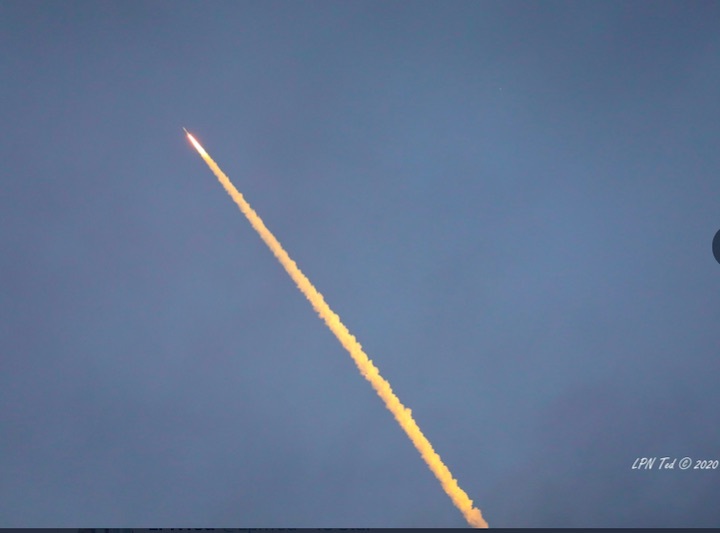
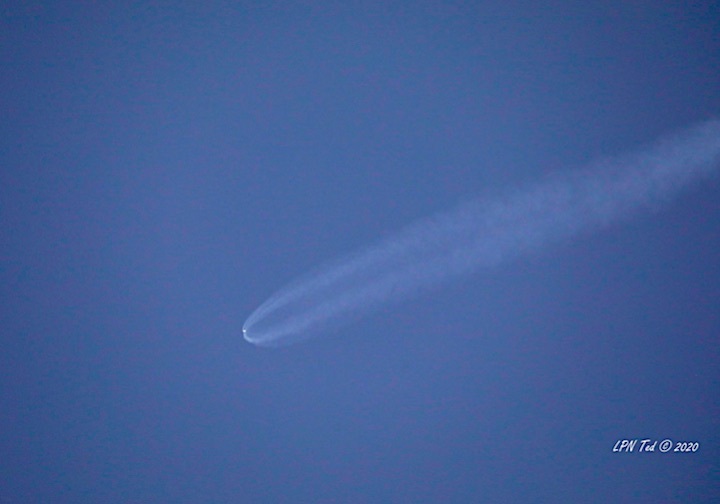
Fotos: ©LPNTed
+++
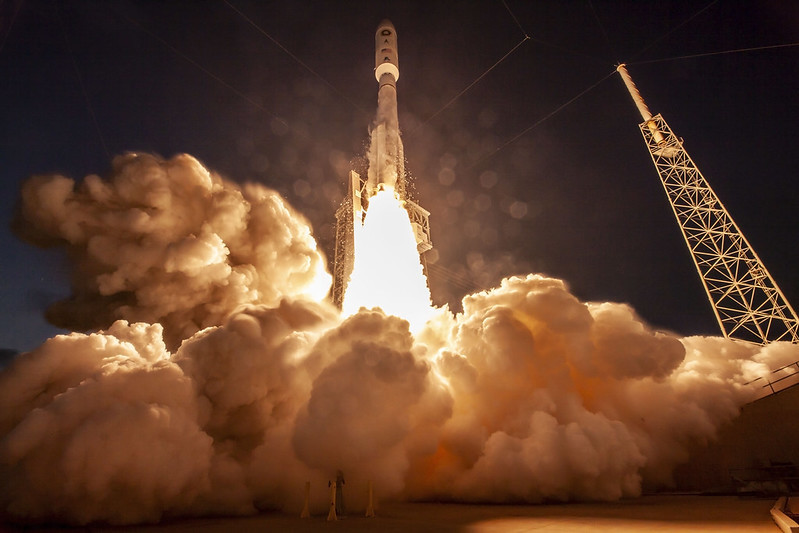
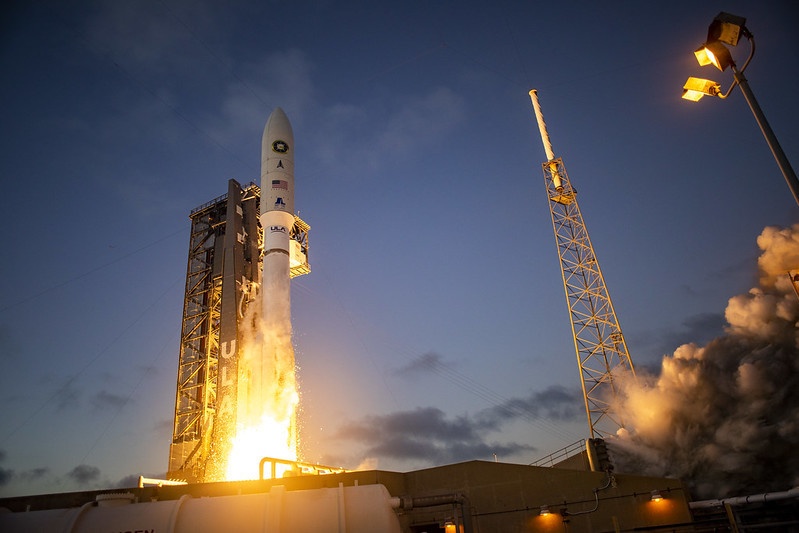
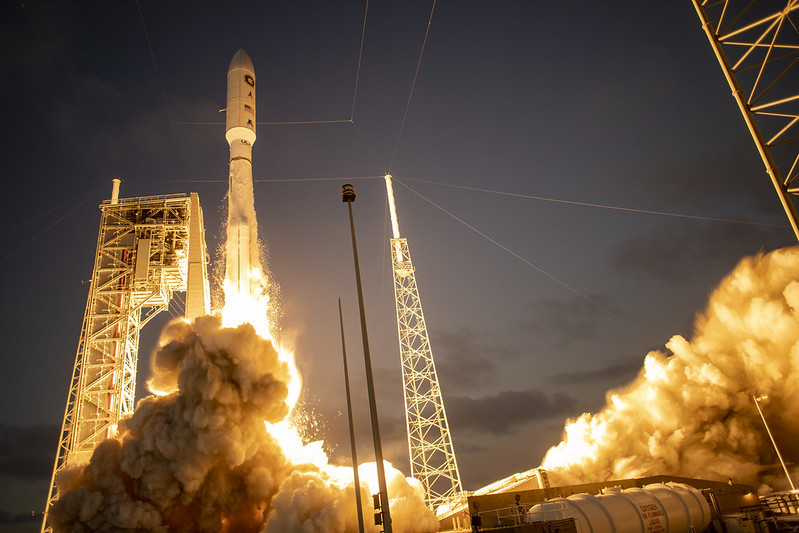
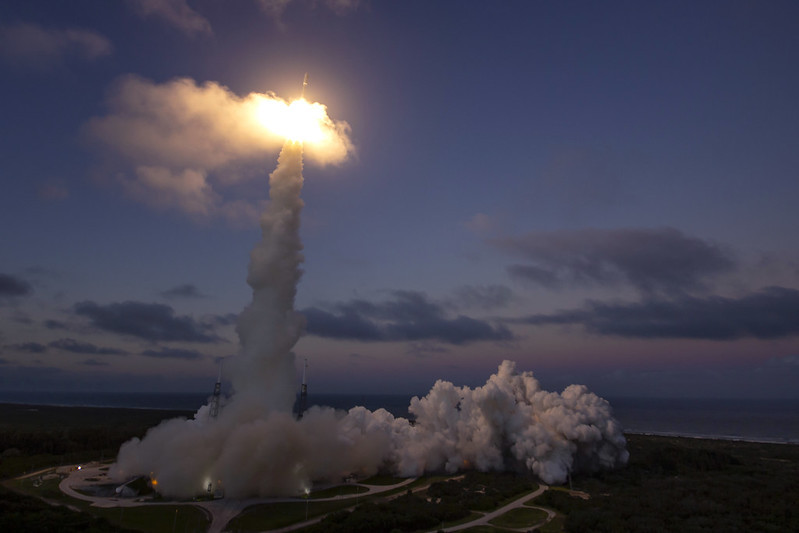
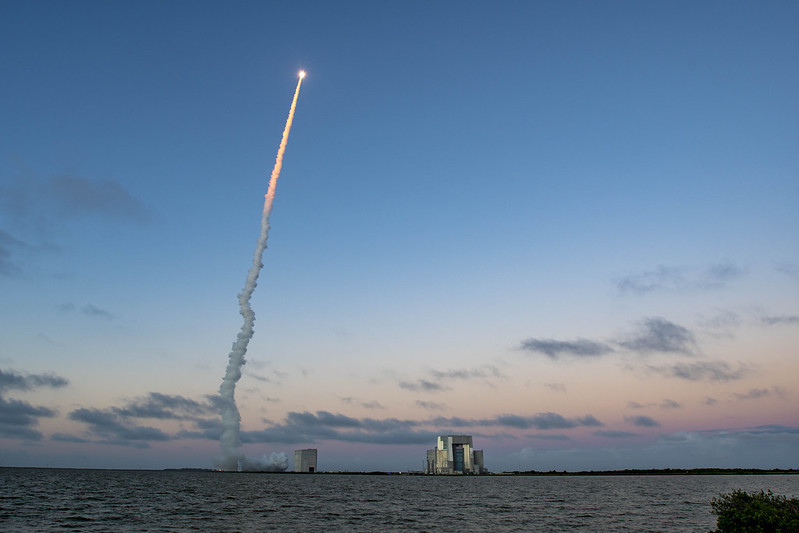
Quelle: ULA

